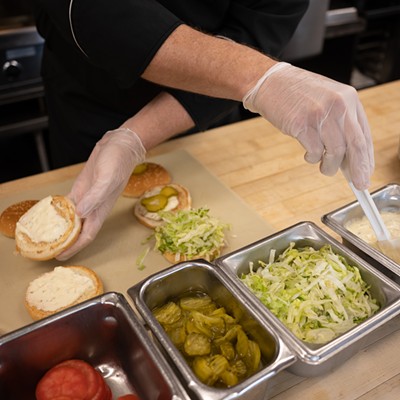I had a housewarming and pinakbet is all I wanted to make. Though I moved into a house nothing like the homes I grew up in, the chaos awoke the craving for a food I’ve never had a recipe for. Like most comfort foods, this stew-like dish can be contentious. Everyone has tweaks, but no recipe. My version has had its own migration.
Growing up in Hawaii, with a white father and a brown mother, often meant catering to his tastes; out went the bittermelon and whole peppercorns. The melded food of Hawaii, which includes influences from the Philippines, among others, is generally mild, sweeter and less pungent; out went the bagoong. I haven’t eaten meat, barring necessity (and excepting fish sauce) since I was a teenager; out went the pork. I am poor; out went the wing beans. I even recently ate pinakbet with brown rice, while living with a lovely, Northeastern hippie.
Still, the recipe feels distinctly Ilocano, like a base for people, like me, who have come a long way. It still requires a side plate for slices of ginger and garlic cloves. Since living on my own, I have reincorporated bittermelon and whole peppercorns, and even sometimes add a small smear of bagoong (shrimp paste) and top with burnt-garlic slices.
Ingredients
- 2-3 pounds tomatoes, any variety
- 2-3 inches Chinese ginger, sliced
- 1 head of garlic, in cloves
- 2-3 tbsp. whole peppercorns
- ½ cup stock to start
- ½ kabocha squash, roughly cubed
- ½ bittermelon, cored and soaked in salty water for at least 20 minutes and rinsed well
- 2 small Chinese eggplants
- 1 bay leaf
- ¼ pound of okra
- Salt and fish sauce to taste
Instructions
Roughly chop tomatoes. Over medium heat, add to pot with ginger, garlic, bay leaf, peppercorns and stock. Once the stock is boiling and the tomatoes have softened, add salt and fish sauce. Broth should seem salty (with bagoong tasting of the ocean) before adding the vegetables. Start with kabocha. Cook until nearly soft, then add eggplant and bittermelon. When eggplant darkens, add okra. Cook until done. Serve immediately with rice. Serves six to eight.

















